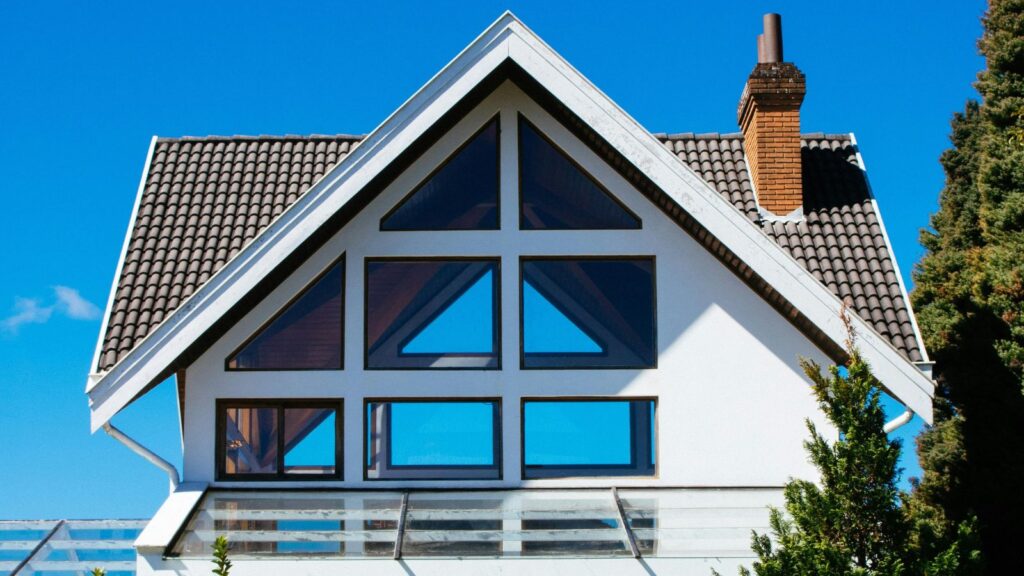The roof is one of the most critical parts of any building, acting as the first line of defense against natural elements. From intense heat to heavy snowfall, the climate plays a major role in shaping how a roof should be designed. Builders and homeowners alike must consider various environmental pressures when deciding what materials, shapes, and construction techniques to use. Roof design is far from a one-size-fits-all decision; what works in a desert may quickly fail in a humid coastal town. Understanding how climate affects roof performance can help prevent long-term damage and increase energy efficiency. This article looks at six key factors that influence roofing choices across different climate zones.
Moisture Resistance
Excessive humidity, rainfall, or snowmelt can be a major concern for roofing systems in many regions. When a roof can’t effectively repel water or dry out quickly, it becomes susceptible to rot, mold, and material degradation. This is particularly true in areas prone to year-round dampness or heavy seasonal precipitation. In tropical and coastal climates, roofs must be designed to shed water quickly while resisting long-term saturation. One of the most effective ways to achieve this is through thoughtful material selection and professional installation. With the help of a dependable roofing company in Ball Ground, homeowners can select water-resistant materials like metal, slate, or asphalt shingles with fiberglass backing. Proper underlayment, flashing, and ventilation are equally critical in preventing moisture from penetrating the roof deck. The shape of the roof also plays a role. Steep slopes allow water to run off more quickly than flat or shallow ones, making them popular in wetter regions. Even the color and texture of roofing materials can influence how long water lingers on the surface.
Thermal Performance
Regions that experience extreme heat or cold put added stress on roofing systems. In hot climates, roofs must deflect solar heat to keep interior spaces cooler. This is often achieved through reflective materials such as white membranes, light-colored tiles, or metal roofing that reflects sunlight rather than absorbing it. Poorly insulated or dark-colored roofs can lead to excessive heat buildup in the attic and living spaces, driving up energy costs.
Cold climates, on the other hand, demand roofs that insulate effectively and prevent heat from escaping the home. Materials such as asphalt shingles, wood shakes, or composite tiles paired with heavy insulation beneath the roof deck can keep buildings warm without placing added strain on heating systems. Roofs in snowy regions must also support the weight of accumulated snow and resist ice damming—an issue caused by uneven melting and refreezing. A well-designed roof keeps interior temperatures stable and energy bills more manageable.
Wind Resistance
High-wind areas, such as those affected by hurricanes, tornadoes, or strong seasonal gusts, require roofs that can withstand significant uplift forces. Poorly designed or aged roofs are at risk of being partially or entirely torn off during storms. Roof shape and material fastening methods make a significant difference in wind resistance.
Hip roofs, which slope on all four sides, tend to perform better in high winds than gable roofs, which have vertical ends that can catch wind like a sail. Material choice matters too—metal panels secured with screws, interlocking tiles, and reinforced shingles are all better suited for windy environments than loosely fastened options. The installation process should be rigorous, involving proper edge sealing and attachment to prevent peeling or flapping under pressure. A roof that meets regional building codes for wind zones is more likely to stay intact during extreme weather.
Snow Load Management
Areas that experience frequent or heavy snowfall need roofs that can handle the weight and prevent collapse. Snow may appear soft and fluffy, but it becomes very heavy when it accumulates, especially if it includes ice. Flat or low-pitched roofs are more likely to suffer from structural stress in these conditions unless they are reinforced accordingly. Steeper slopes are usually preferred in snowy regions, as they allow snow to slide off more easily. Materials with smooth surfaces, like metal, can also encourage snow shedding. Proper insulation and ventilation are critical to preventing ice dams, which form when warm air escapes from inside the home, melts snow on the roof, and then refreezes at the eaves.
Sun and UV Exposure
In areas where the sun beats down year-round, ultraviolet (UV) radiation can break down roofing materials over time. Asphalt shingles may lose granules, wood can crack and fade, and some synthetic materials may warp or become brittle. Roofs in sun-drenched climates need materials that can withstand long-term exposure without deteriorating quickly.
Reflective surfaces help protect against UV damage by bouncing sunlight away from the structure. Cool roofing systems, which are designed to reduce heat absorption and limit surface temperatures, are particularly effective in hot and sunny climates. These systems often come with high solar reflectance ratings and are made of materials like white thermoplastic, elastomeric coatings, or treated metal panels. Regular maintenance and inspections can help catch early signs of UV damage before it compromises the roof’s integrity.
Roof design is deeply influenced by the environment in which a building stands. From handling heavy rain to reflecting harsh sun, every climate presents its own challenges—and opportunities. Whether designing a new roof or replacing an aging one, climate-aware design is key to long-lasting performance and peace of mind.
